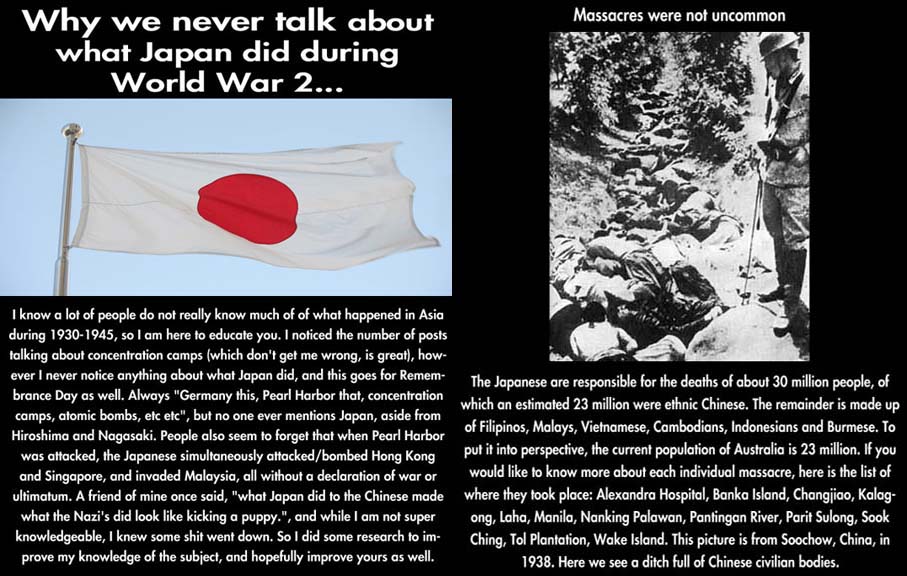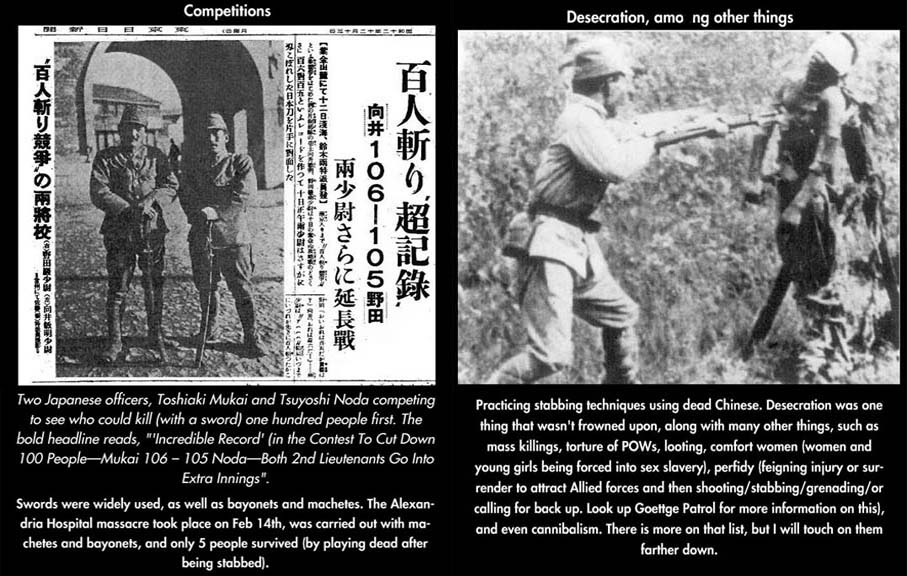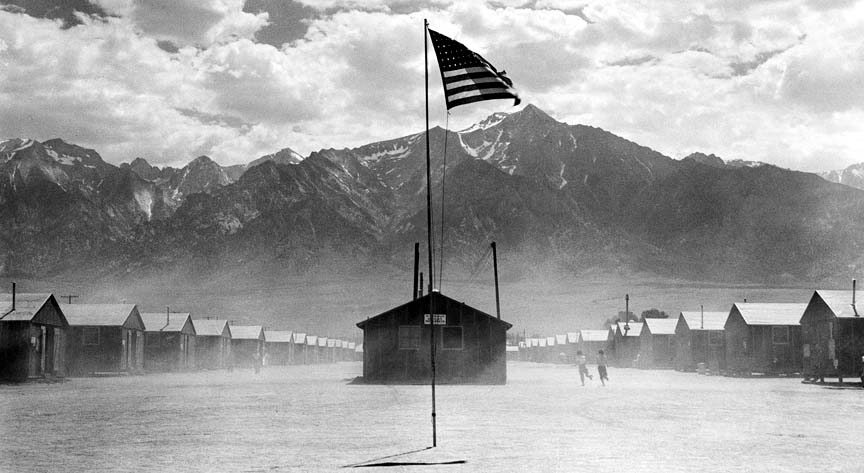The US officially joined the big one, WW II, after the Japs attacked Pearl Harbor, although we were already supplying the Brits
with food and materials plus our ships were being torpedoed by U-Boats. In an emotional frenzy similar to post 9-11 the country
scrambled to ramp up to war footing. One question was what to do about the 112,000 Japanese-Americans, primarily on the
west coast, where an invasion could take place.
Dorothea Lange photographed the internment process, then Army intelligence grabbed the pictures and squirreled them away
in the national archives..

Quote:
“A viper is nonetheless a viper wherever the egg is hatched—so a Japanese-American, born of Japanese parents—grows up to be a Japanese, not an American.”
— Los Angeles Times, February 2, 1942
|

Quote:
“The Japanese race is an enemy race and while many second and third generation Japanese born on American soil, possessed of American citizenship, have be come ‘Americanized,’ the racial strains are undiluted
.…It, therefore, follows that along the vital Pacific Coast over 112,000 potential enemies, of Japanese extraction, are at large today. There are indications that these are organized and ready for concerted action at a favorable opportunity.
The very fact that no sabotage has taken place to date is a disturbing and confirming indication that such action will be taken.”
— General John L. DeWitt, head of the U.S. Army’s Western Defense Command
|
DeWitt, representing the military view, was the one who reported to Roosevelt the danger, and need for internment camps.

Quote:
“Go ahead and do anything you think necessary… if it involves citizens, we will take care of them too. He [the President] says there will probably be some repercussions, but it has got to be dictated by military necessity, but as he puts it, ‘Be as reasonable as you can.’”
— Secretary of War, Henry L. Stimson. February 11, 1942
|

There has been a lot of hindsight hand wringing about the decision to create internment camps, how it was unconstitutional,
illegal, and unfair. But how/why was that decision made? Beyond the traditional racism and mistrust of Orientals in the US, there
was an incident which heavily influenced the decision, the Niihau incident.
Niihau is one of the smallest of the Hawaiian Islands and the Jap Navy thinking it was deserted told their pilots to try to get there
if they were in trouble and a sub would pick them up. But there were 136 people living there, working for Aylmer Robinson who
owned the island but lived on another island. Among the Hawaiians were Jap born issei Ishimatsu Shintani and Hawaiian-born
nisei Yoshio and Irene Harada.

Quote:
On December 7, 1941, Airman First Class Shigenori Nishikaichi (c. 1919 – December 13, 1941), who had taken part in the second wave of the Pearl Harbor attack, crash-landed his battle-damaged aircraft, an A6M2 Zero "B11-120" from the carrier Hiryu, in a Niʻihau field near where Hawila Kaleohano (1912–1986), a native Hawaiian, was standing. Kaleohano was unaware of the attack at Pearl Harbor, but knew from newspapers that the relationship between the U.S. and Japan was poor due to Japanese expansionism and the U.S. oil embargo on Japan. Recognizing Nishikaichi and his plane as Japanese, Kaleohano thought it prudent to relieve the pilot of his pistol and papers before the dazed airman could react. He and the other Hawaiians who gathered about treated the pilot with courtesy and the traditional Hawaiian hospitality, even throwing a party for him later that Sunday afternoon. However, the Hawaiians could not understand Nishikaichi, who spoke only Japanese with a limited amount of English. They sent for Japanese-born Ishimatsu Shintani (an issei), who was married to a native Hawaiian, to translate.
Having been briefed on the situation beforehand and approaching the task with evident distaste, Shintani exchanged just a few words with the pilot and departed without explanation. The puzzled Hawaiians then sent for Yoshio Harada, who was born in Hawaii of Japanese ancestry, and his wife Irene (Irene was issei), both of whom constituted the remainder of the Niʻihau population of Japanese ancestry. Nishikaichi informed Harada of the attack on Pearl Harbor, a revelation Harada thought prudent not to share with the non-Japanese natives. Nishikaichi desperately wanted his papers returned, which he had been told should by no means fall into American hands, but Kaleohano refused to return them. The Haradas decided to assist Nishikaichi in retrieving his papers and escaping.
|
First they offered Kaleohano $200 for the pilots papers but he refused. Harada and Nishikaichi, attacked the lone guard posted
at Harada’s house. They locked the guard in a warehouse, took the pilot’s pistol and a shotgun then went to Kaleohanos but he
escaped to warn the others. They burned the plane after removing two machine guns/ammo, then burned Kaleohano‘s house,
hoping to destroy the papers with the codes and plans. Most couldn’t believe their friend/neighbor for three years, Harada, could
do that, but when the escaped guard arrived they hid in the forest.
Quote:
Historian Gordon Prange notes that it was "the rapidity with which the three resident Japanese went over to the pilot's cause" which troubled the Hawaiians. "The more pessimistic among them cited the Niʻihau incident as proof that no one could trust any Japanese, even if an American citizen, not to go over to Japan if it appeared expedient."
Novelist William Hallstead argues that the Niʻihau incident had an influence on decisions leading to the Japanese American internment. According to Hallstead, the behavior of Shintani and the Haradas were included in an official Navy report dated January 26, 1942. Its author, Navy Lieutenant C. B. Baldwin, wrote, "The fact that the two Niʻihau Japanese who had previously shown no anti-American tendencies went to the aid of the pilot when Japanese domination of the island seemed possible, indicate[s] [the] likelihood that Japanese residents previously believed loyal to the United States may aid Japan if further Japanese attacks appear successful."
|
That's why it seemed like a good idea at the time.
It wouldn't happen now because they could easily decide who to lock up by scanning everyone's NSA dossier.
 link
link
link
link








